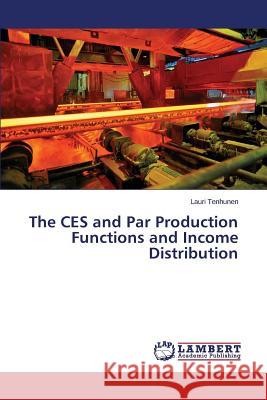The Ces and Par Production Functions and Income Distribution » książka
The Ces and Par Production Functions and Income Distribution
ISBN-13: 9783659507441 / Angielski / Miękka / 2013 / 124 str.
The present study introduces the Par Production Technology. The CES and Par Production Technologies differ most in the following feature. In CES Technology the ratio of the income shares is not limited and the shares vary from 0 to 1 or vice versa depending on the ratio of (the two) inputs. In Par Technology the ratio of the income shares is finite and the limits are controlled by the distribution limit parameter(s). Both technologies supply a different system for the optimisation as they demand separate forms for the icome share equations. The Impossibility Theorem, proved by Uzawa (1968), implies that the CES production function can not be generalised on n (n>2) variables with arbitrary values of the partial elasticities. It could be inferred, that the relative income shares should have limited areas which are more narrow than between 0 and 1 in case the number of input variables is bigger than 2. The Par production function described here can be used in theoretical and empirical work both in the basic nonlinear and the linearised forms.
The present study introduces the Par Production Technology. The CES and Par Production Technologies differ most in the following feature. In CES Technology the ratio of the income shares is not limited and the shares vary from 0 to 1 or vice versa depending on the ratio of (the two) inputs. In Par Technology the ratio of the income shares is finite and the limits are controlled by the distribution limit parameter(s). Both technologies supply a different system for the optimisation as they demand separate forms for the icome share equations. The Impossibility Theorem, proved by Uzawa (1968), implies that the CES production function can not be generalised on n (n>2) variables with arbitrary values of the partial elasticities. It could be inferred, that the relative income shares should have limited areas which are more narrow than between 0 and 1 in case the number of input variables is bigger than 2. The Par production function described here can be used in theoretical and empirical work both in the basic nonlinear and the linearised forms.











